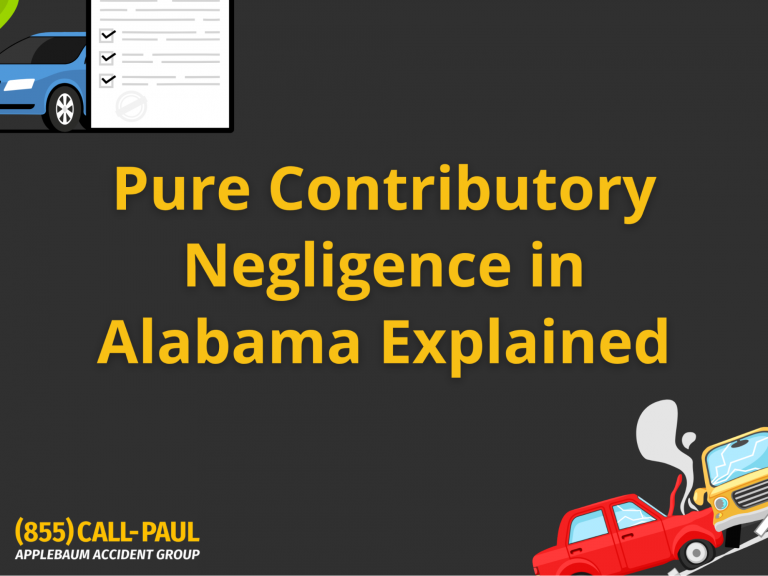The average settlement for a child in a car accident ranges from $10,000 to over $1 million, depending on injury severity, long-term effects, emotional trauma, and insurance coverage. Most cases fall between $25,000 and $100,000, but every situation is unique.
If your child was hurt in a car crash, you’re likely overwhelmed with medical bills, paperwork, and fear about the future. In this guide, you’ll learn what influences settlement amounts, what compensation you can claim, how these cases differ from adult claims, and how to protect your child’s best interests, now and in the years to come.
Can You Claim Compensation for a Child After a Car Accident?
Yes, parents or legal guardians have the legal right to file a personal injury claim on behalf of a child injured in a car accident. But the process isn’t identical to adult claims. Because children cannot legally represent themselves, the law adds multiple layers of oversight to ensure the child’s best interests are protected long after the legal claim is resolved.
Court Oversight Is Required for Minor Settlements
Unlike adult settlements, most states require court approval for any settlement involving a minor, often triggered by amounts above $25,000. This safeguard ensures that the compensation is both fair and responsibly managed. In many cases, especially if the payout is substantial, the court may:
- Appoint a conservator
- Require a structured settlement
- Place funds in a court-monitored account
These structures are designed to preserve compensation for long-term needs like therapy, education, or future medical care, while reducing the risk of financial misuse.
The Role of a Litigation Guardian or “Next Friend”
In these claims, the parent or legal guardian usually serves as a “litigation friend” or guardian ad litem. This individual is authorized to make legal decisions on the child’s behalf and is responsible for:
- Working with the attorney
- Gathering medical and accident-related documentation
- Reviewing and approving any proposed settlement
If the court believes the proposed settlement doesn’t adequately support the child’s long-term needs, it can modify or reject the agreement.
Why These Protections Matter for Your Child’s Future
The true cost of a child’s injury doesn’t always show up immediately. A back sprain today might become chronic pain in adolescence. Whiplash could turn into long-term anxiety or emotional trauma. These future needs are why both attorneys and courts prioritize:
- Ongoing medical treatment
- Mental health support
- Future care over immediate payouts
Average Settlement for a Child
The average settlement for a child injured in a car accident varies widely depending on the severity of the injury, the expected recovery, and the available insurance coverage. That said, most cases involving minor injuries, such as bruises, sprains, or soft-tissue damage, tend to settle in the $10,000 to $25,000 range.
When a child experiences moderate injuries, like a concussion, broken bone, or prolonged need for physical therapy, the average car accident settlement may fall between $25,000 and $100,000. These cases often include both economic damages (medical bills, counseling) and non-economic damages (pain and suffering, emotional trauma).
In more severe scenarios, such as traumatic brain injuries, paralysis, or permanent disability, settlements can exceed $1 million. These are life-altering situations where the child may never fully recover, and the financial impact extends far beyond immediate medical treatments.
Real-Life Settlement Scenarios:
- Minor injuries (e.g., whiplash, cuts and bruises): $15,000–$25,000
- Prolonged recovery + ongoing therapy or mental health support: $75,000–$200,000
- Permanent disability, disfigurement, or wrongful death: $500,000–$1 million+
But averages can be misleading. Every car accident settlement is driven by its own set of facts: who was at fault, how the accident happened, the insurance limits, and even where it occurred. For instance, if your child was injured on a school bus or by a semi-truck, the case may involve commercial policies or government liability caps, which influence the outcome significantly.
That’s why the key isn’t comparing your case to a national average, it’s building a strong, well-documented claim tailored to your child’s specific injuries and future needs. And it starts with talking to the right people. If you’re unsure where to begin, Applebaum Accident Group can help connect you with a trusted attorney experienced in car accidents involving minors, so you can move forward with clarity and confidence.
Factors That Affect the Settlement Amount
When a child is injured in a car accident, no two settlements look the same. That’s because the total compensation is driven by a mix of factors, some medical, some legal, and some deeply personal. Here’s what shapes the final number behind the scenes:
Injury Severity
The most significant driver of a car accident settlement is the severity of injury. A child with minor injuries, like cuts and bruises, or even a back sprain, will typically receive far less than a child with a herniated disc, broken bones, or a traumatic brain injury (TBI).
Injury severity doesn’t just affect medical expenses, it also impacts non-economic damages like pain and suffering. A child suffering temporary discomfort might warrant a smaller payout than one with a spinal injury that will require lifelong care. In cases of permanent disability, compensation often accounts for decades of lost quality of life and functionality.
Future Medical Costs
Children may recover physically faster than adults, but they also have a longer road ahead. That’s why projecting future medical care is key to a fair settlement. A skilled legal professional will typically consult with medical experts to calculate expected costs for:
- Surgery and hospitalization
- Physical therapy and rehabilitation
- Long-term medications
- Mental health therapy or trauma counseling
In some cases, costs for special education programs or assistive technologies must also be included. The younger the child, the greater the long-term implications, and the larger the potential payout.
Emotional & Psychological Trauma
One factor that’s often undervalued in settlement discussions is emotional distress. Yet children involved in car accidents frequently experience PTSD, depression, or anxiety-related behaviors. Recurring nightmares, school avoidance, and social withdrawal are not uncommon.
In legal terms, these qualify as non-economic damages, and they carry weight. While they don’t come with receipts like surgery bills, they are just as real and compensable under personal injury law.
Age of the Child
Age plays a surprising role in how much compensation a child might receive. Younger children are seen as more vulnerable to long-term harm, both physically and emotionally. A toddler who suffers a concussion may face a different lifetime outcome than a teenager with the same injury. Courts and insurance adjusters recognize this, and settlement amounts may reflect the recovery horizon and developmental risks younger kids face.
Type of Accident
How the accident occurred also matters. Cases involving school buses, semi-trucks, or DUI drivers are often treated with heightened scrutiny. For example:
- Commercial vehicles (like semi-trucks) usually have larger insurance policies and more formal liability protocols.
- Accidents involving public transportation may be subject to government liability caps, limiting how much each injured party can receive, especially when multiple families are affected.
- DUI-involved accidents may allow families to pursue additional compensation under crime victim compensation programs or punitive damages.
This is why working with experienced professionals, like the network at Applebaum Accident Group, can make or break your outcome. We help families understand where their case fits, and connect them with attorneys who’ve handled similar complex claims.
What Are You Actually Compensated For?
Beyond general numbers, families often ask: “What, exactly, does the settlement cover?” The answer lies in both economic and non-economic damages, including some costs you may not realize are recoverable:
- Medical bills: Emergency room visits, surgeries, rehab, medication, and follow-ups
- Future medical care: Especially for conditions like PTSD, mobility issues, or neurological complications
- Pain and suffering: For the physical discomfort and emotional anguish caused by the accident
- Property damage: Things like broken glasses, school supplies, or car seats
- Home modifications: Ramps, accessible bathrooms, or other renovations needed for recovery
- Special education or counseling: When emotional trauma affects school or social functioning
Each of these categories contributes to the total value of a child’s car accident settlement. And while many families focus on the immediate hospital bills, the true financial impact usually spans months, if not years, beyond the initial treatment.
What If the Insurance Policy Isn’t Enough?
One of the most distressing moments in this process is realizing that the at-fault driver’s insurance may not be enough to cover your child’s damages. It’s a common concern, especially in cases where multiple children were injured, or where the other driver carries only minimum liability coverage.
Here’s how families can still find relief:
- Layered insurance claims: In some cases, your own Uninsured/Underinsured Motorist (UMBI) coverage can step in to fill the gap.
- Multiple policy claims: If the child was in a school bus or commercial vehicle, several insurers may be involved.
- Legal strategies: Skilled attorneys can often negotiate structured settlements or pursue claims against additional responsible parties, such as employers or school districts.
- Crime victim programs: If the crash involved criminal behavior, compensation may be available outside of standard personal injury claims.
Families often worry, “Will there be enough to cover everything?”, and understandably so. Medical expenses are just the beginning. That’s why Applebaum Accident Group exists. We connect you to lawyers who know how to maximize your recovery, even when policy limits are tight. Because your child’s future shouldn’t hinge on a coverage gap.
Should You Pay Medical Bills Now or Wait?
This is one of the most urgent concerns families face after a child is injured in a car accident. The answer comes down to timing, coverage, and legal caution.
Start with your insurance. In most cases, Personal Injury Protection (PIP) or MedPay through your auto insurance should be your first resource. These policies typically cover initial medical expenses regardless of who was at fault. If your child was a passenger, the driver’s PIP may also apply.
Next, submit expenses to your health insurance provider. Keep in mind, though, that if you later receive a settlement, your insurer may place a lien, a legal right to be reimbursed from that settlement. This is why you should not blindly pay bills out of pocket, especially if your child’s injury is ongoing or requires further evaluation.
What you should do immediately is document every cost. Even minor receipts, like $30 for a therapy session, can add up to thousands over time and strengthen your personal injury claim.
Legal Process for Child Settlements
Child settlements involve more safeguards than adult injury claims, and for good reason. Minors can’t legally manage their own money, which means the court steps in to protect their long-term well-being.
When a settlement exceeds $25,000, it typically requires judicial approval. The court will review:
- The total settlement agreement
- Whether the offer adequately reflects current and future damages
- How the funds will be managed moving forward
The court may recommend a structured settlement, a payout schedule that distributes money over several years, often beginning when the child turns 18 (or later, depending on need). Alternatively, for smaller awards, a lump sum may be allowed, with the funds held in a restricted account until adulthood.
In high-dollar settlements or cases involving ongoing care, the court may appoint a conservator, a neutral third party entrusted with managing the funds. While this adds another layer to the process, it also protects the child’s financial interest and prevents misuse of the money.
These added steps might seem like obstacles, but they’re designed to ensure your child’s settlement isn’t just fair, it’s sustainable. And when you work with a lawyer who specializes in child injury cases, they’ll walk you through the process and advocate for your child at every stage. Applebaum Accident Group works with attorneys who understand exactly how to structure these cases to protect your family’s future.
What People Regret Doing After Filing a Claim
There’s a narrow window to get things right in a personal injury claim, especially when a child is involved. Missing small details early on can have a big impact later. Here’s what to avoid if you want to preserve the full value of your child’s car accident settlement.
1. Missing the Filing Deadline
Every state has a statute of limitations, and while minors often get extensions, it’s dangerous to rely on that. Waiting too long to file can result in your claim being denied altogether. Some states require action within two years, while others offer more time, but if you’re grieving or overwhelmed, that clock can run out fast. Don’t assume you have more time than you do.
2. Failing to Track Every Expense
Settlements are built on evidence. If you don’t keep receipts for physical therapy, transportation, or even lost workdays, you may leave money on the table. Be meticulous, document every co-pay, every hour missed from work, and every therapy session. The more detailed your records, the stronger your economic damages claim.
3. Speaking to the At-Fault Driver’s Insurance Too Soon
It’s easy to feel pressured by insurance adjusters calling “just to check in.” But giving statements or accepting early settlement offers, especially without legal representation, can lock you into a lowball payout that doesn’t cover future costs. Never negotiate directly until you’ve spoken with a qualified attorney.
4. Assuming Health Insurance Will Handle Everything
Health insurance is not designed to fully cover auto accident injuries. You may find that many services, like ongoing trauma therapy or home medical devices, aren’t covered. Don’t make the mistake of assuming all expenses will be reimbursed or that you can go back later to claim what’s missing.
If you’re unsure where to turn, Applebaum Accident Group can guide you to legal experts who know how to avoid these missteps, and maximize every dollar your child deserves.
Action Plan If Your Child Was Hurt
You don’t need to have all the answers to take the first step. If your child has been injured in a car accident, here’s what you can do today:
- Speak with a lawyer, not tomorrow. Today. Many offer free consultations and only get paid if you win.
- Start collecting documentation: medical reports, receipts, insurance statements, and therapy schedules.
- Submit expenses to PIP or MedPay insurance if available to cover early costs.
- Don’t wait for grief to pass. Legal timelines move forward, even if emotionally, you’re not ready.
Take the First Step Toward Justice
With the right support, your family can pursue compensation that accounts for every detail: the pain your child has endured, the therapy they’ll need, the life you’re helping them rebuild.
If your child has been injured in a car accident, you are not alone. Applebaum Accident Group connects you with trusted attorneys who understand what your case is worth, and how to make sure you don’t settle for less.
📞 855-225-5728 | Request Your Free Consultation Now
With Applebaum Accident Group, you gain access to Florida’s top legal and medical networks, without the stress or confusion. We help you move forward with confidence, clarity, and the support you need.





